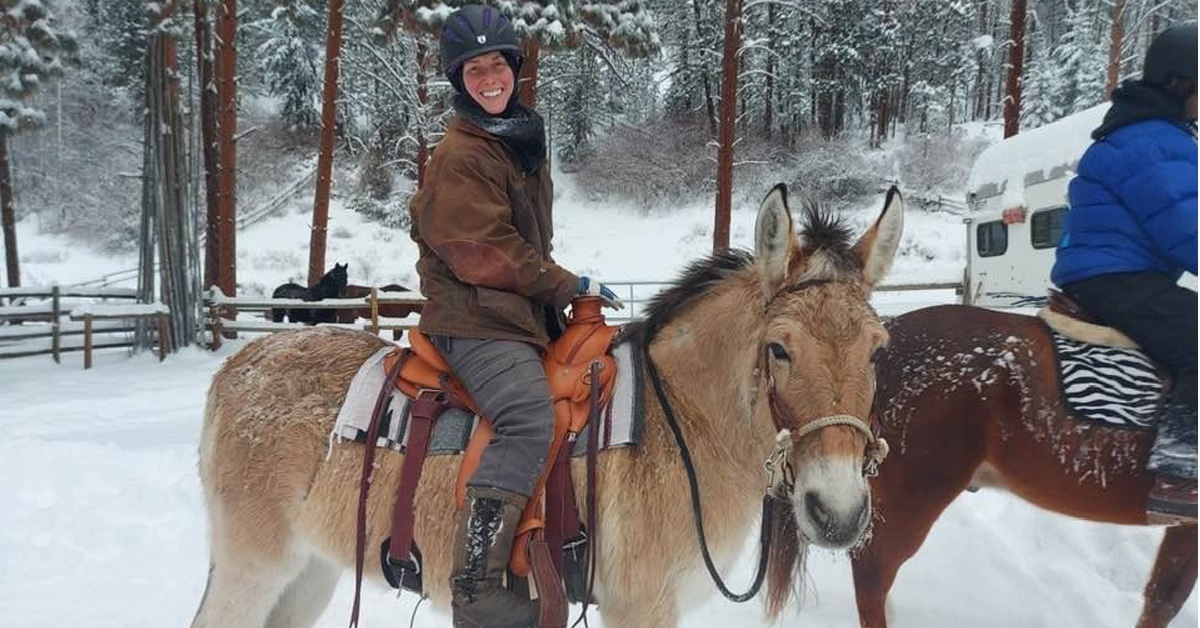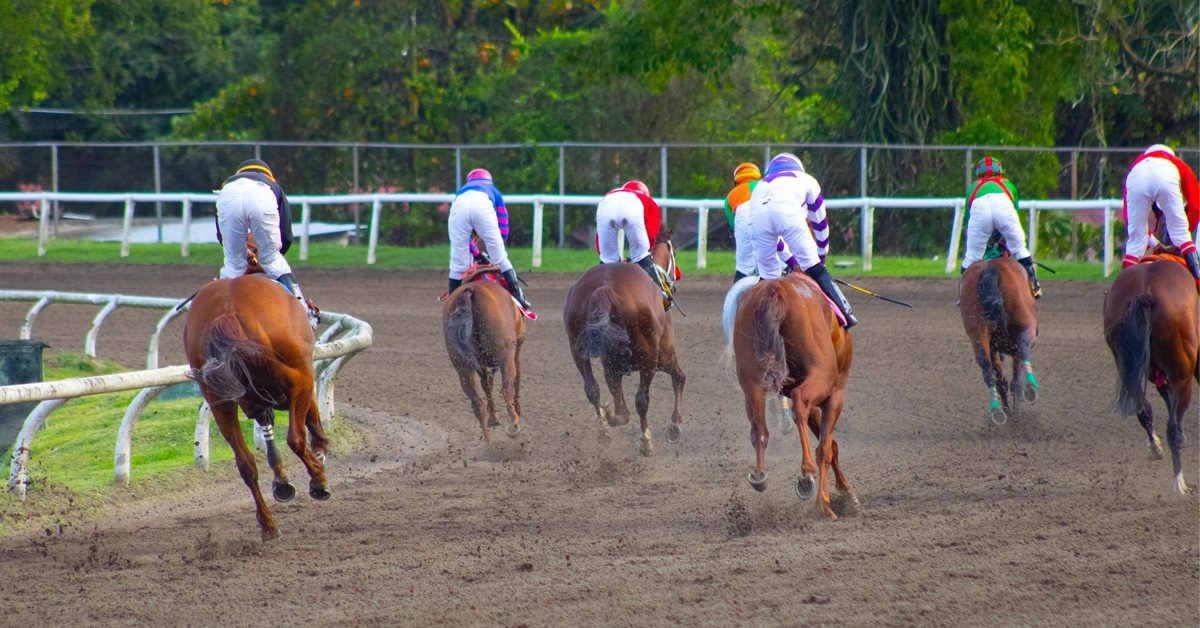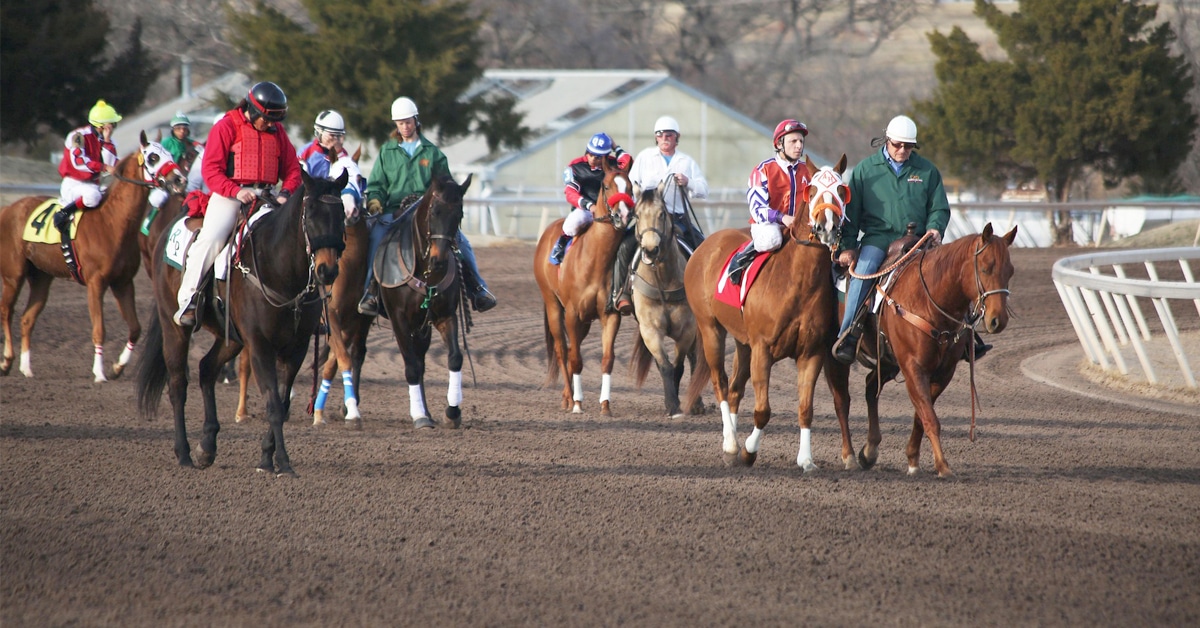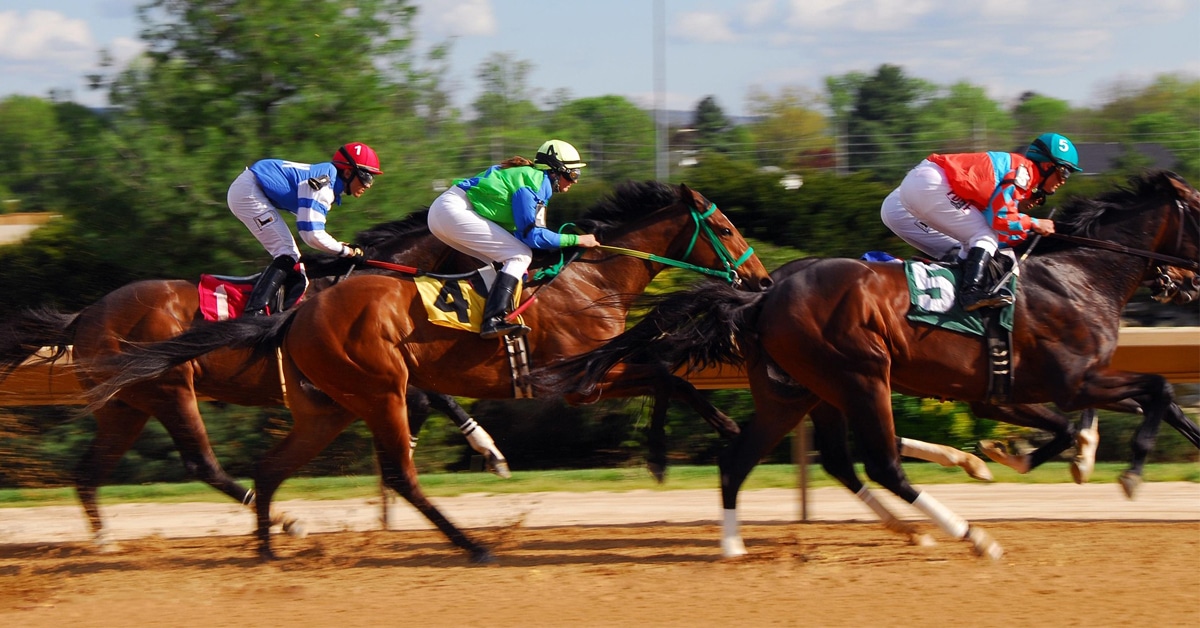Your good mare has been bred to a popular stallion, she has been announced in foal, and you are eagerly anticipating welcoming the product of that union. Then suddenly, only weeks into the gestation period, the pregnancy is spontaneously terminated.
Having a mare “slip” a foal is heartbreaking, expensive and frustrating. About 17 per cent of diagnosed pregnancies fail to produce a foal, and approximately 60 per cent of those failures occur within the first five weeks of pregnancy. This failure rate increases to 40-50 per cent in aged mares. Researchers at major equine veterinary centres at Canadian universities are constantly working to improve those odds and discover the causes of early pregnancy loss.
Conception 101
Mares cycle about every 21 days from April to October, consisting of 14-15 days of diestrus (sexual quiescence) and seven days of estrus (heat), the latter which varies depending on the time of year. The mare ovulates about day five of the heat cycle, when an egg (oocyte) is shed from a follicle in the ovary. The egg travels into her fallopian tube, where it will remain viable for six to eight hours, then it is fertilized after breeding or artificial insemination. The sperm is rapidly drawn into the fallopian tube by uterine contractions, and providing conditions are favourable, up to 90 per cent of mares will successfully conceive at this time.
Following fertilization, the embryo (the fertilized ovum and its enclosing membranes are now called the conceptus) remains in the fallopian tube for five or six days. It then proceeds to the uterus, where it will travel, propelled through the uterus by uterine contractions, for 10 days before it “fixes,” becoming lodged at the base of one uterine horn. It has to traverse the entire uterus, touching all portions of it, to be recognized by the mare, or she will reject the embryo and begin showing signs of estrus that begin her next heat cycle. If the mare does recognize the presence of the embryo, then it will attach itself to the uterine wall on or about day 17.
Progesterone levels in the blood support the pregnancy, produced primarily in the corpus luteum (CL) at this early stage, a specialized structure formed at the site where the follicle ruptured when it released the egg during ovulation. The CL is fully functional and secreting progesterone by the five-day mark following ovulation.
As early as day 14-16, ultrasound can be used to confirm initial pregnancy and detect twin embryos, and by day 26-30, the veterinarian can confirm a heartbeat, indicating a live fetus. By the 36-38-day mark, the embryo develops endometrial cups where it attaches to the uterine wall. The cups produce a hormone called equine chorionic gonadotropin (eCG), which stimulates formation of more CLs on the ovaries, which in turn produce more progesterone, preventing the mare from coming back into heat.
If the egg was not fertilized, the mare’s uterus releases a hormone called prostaglandin about day 14, which destroys the progesterone-producing CL and causes the mare to come back into heat.
What Goes Wrong?
Horse embryos are not more fragile than other species, but horses in general have poor reproductive performance (i.e., the ability to maintain a conceptus). Of pregnancies lost early, the highest percentage (24 per cent) of early embryonic death occurs between the time when the embryo enters the uterus on day five/six, and up to day 11. The next highest incidence (17 per cent) occurs between days 14-40. There are a number of known causes of this early embryonic loss. Hormone deficiencies or imbalances, a hostile uterine environment due to infection, stress, fever, twin embryos (see sidebar, page 40), and the age of the mare can all be contributing factors. Also, if a mare is bred too late post-ovulation, the egg may not live as long as the sperm, becoming aged and defective.
The most common bacterial cause of abortion includes organisms of the streptococci group, as well as the leptospira (the same agent that causes moon blindness), nocardia, klebsiella and staphylococcal families. Mares that suck air into their vaginas, or those with poor vulvar conformation or damage due to foaling trauma are at increased risk of attracting opportunistic bacteria. These organisms enter the reproductive tract and migrate to the uterus, where they infect the fetal membranes and cause abortion. Often in this scenario, retention of the placenta or uterine infection (endometritis and/or metritis) also results, which must be treated and resolved before the mare can be rebred. Mares should always be swabbed before initial breeding or rebreeding to detect the presence of harmful bacteria in the uterus. A Caslick’s suture (partially stitching together the lips of the vulva) should be used if perineal conformation indicates.
Congenital defects in the embryo can also cause early pregnancy termination; genetic or chromosomal imperfections can lead to improper development of the embryo and subsequent rejection by the mare.
Other causes of abortion usually resulting in late-gestation loss (eight to 11 months) include equine herpesvirus (EHV-1 abortion virus) and herpesvirus EHV-4 (rhinopneumonitis virus); equine arteritis virus (EAV) from infected carrier stallions; umbilical torsion; ergot alkaloid toxicity in hay and pasture or ingestion of tent caterpillar setae (hairs).
One 2011 study at the Institute of Animal Science in the Czech Republic found that mares mated with off-property stallions aborted in almost a third of cases once they returned home if they were kept in enclosures adjacent to other stallions. It is suspected the disrupted pregnancies were a natural “abortion strategy” because of the perceived risk of infanticide which is seen in male-dominated social groups, where a male will kill the offspring of other males.
Is Spontaneous Abortion Preventable?
Is long as your mare is up-to-date on her vaccinations and deworming schedule, is generally healthy and in good flesh, it is unlikely management has anything to do with early pregnancy loss. Even nutritional deficiencies have not been associated with abortion in mares; as long as they have a body condition greater than two on a scale of zero to five (where five is very fat), they will carry a foal. Mares that are too emaciated or undernourished will not be able to have heat cycles, and, therefore, cannot conceive in the first place.
Certain drugs (e.g., corticosteroids) have, on occasion, been reported to cause abortion in mares. Be sure to examine all drug labels to see whether administration to pregnant animals is contraindicated.
There are few documented cases of injury causing pregnancy loss; the trauma would have to be quite severe and would likely not affect an early-stage embryo. The same is true of trailering and exercise, although horse owners do tend to be suspicious of both.
Looking to the Future
Reproductive research continues at a number of centres in Canada. Scientists believe a significant cause of early pregnancy loss may be a breakdown in the process that triggers maternal recognition of pregnancy (MRP) and ensures continued endometrial (inner membrane of the uterus) support for the embryo, while preventing the mare from going back into heat. At the Western College of Veterinary Medicine (WCVM) at the University of Saskatchewan, Dr. Claire Card is conducting a study to determine what changes in endometrial and luteal tissues are associated with pregnancy. Using treatments proven to influence the endometrium’s receptivity (meclofenamic acid) and prolong the lifespan of the CL (oxytocin), researchers compare tissue responses in healthy mares over four treatment cycles: untreated cycling mare, untreated pregnant mare, meclofenamictreated cycling mare and oxytocin-treated cycling mare. By understanding the processes associated with MRP, scientists hope to develop better therapies for preventing early embryonic loss.
Another group of WCVM researchers, led by Dr. Steve Manning, have been investigating whether electro-acupuncture is valuable for inducing ovulation. Thirty mares in estrus were assigned to three groups: a negative control group receiving a sterile saline solution injection; an electro-acupuncture group subjected to daily 15-minute treatments until ovulation; and a positive control group receiving an injection of chorionic gonadotropin, a proven ovulation induction agent. Palpation, ultrasound and blood analysis were performed and the mares’ reproductive hormone profiles were compared. Further trials using electro-acupuncture to shorten the transitional period between estrus and advance the normal breeding season are also planned.
At the University of Guelph, Dr. Tracey Chenier, Department of Population Medicine, and associates have plans to continue their frozen embryo research (see page 38 for more) in the summer of 2013. “We’re hoping for 20 horses; we will put them through several cycles each and freeze about 40 embryos and transfer them into recipients. We’ll compare the two different (freezing) methods and see what kind of pregnancy rate we get. It’s really exciting and we hope we’ll get some funding to continue this work.”
CHAMPIONS OF THE CAUSE:
RECENT AND ONGOING RESEARCH PROJECTS
Molecular mechanisms of prostaglandin-induced embryonic loss in mares
Dr. Keith Betteridge, Biomedical Sciences, University of Guelph
In this 2010-2011 study, Dr. Betteridge collected conceptuses and small pieces of the endometrium from 17 mares with normal pregnancies and also pregnancies that had been compromised by a hormone injection to induce failure. Changes in proteins, steroid hormones and other molecules in the conceptus and uterus were examined to identify those that best affected success or failure of the pregnancy.
Dr. Betteridge explained the model whereby prostaglandin (a group of naturally occurring, chemically related fatty acids that stimulate contraction of the uterus) was used to induce pregnancy failure. “The effects on the embryo are relatively minor when you give the prostaglandin before day 16; after that, at day 18, the effects on the embryo are immediate and fatal. This is not to say that the embryonic loss the breeder experiences uses exactly the same mechanisms, but we need something reproducible that we can study in a controlled way. By giving prostaglandin, which we know will have an adverse effect on the embryo within a couple of days, it gives us a chance to really focus on that couple of days to see what’s going on in the endometriem, what proteins it’s producing, which of those gets into the conceptus, and how the conceptus deals with them.”
He continued, “If we compare the uterine environment in terms of what proteins are being produced, where they’re being produced and how they’re being distributed – both in a normally-progressing pregnancy and one that we know is on its way out – we can start to identify the proteins that are harmful to the conceptus. Once we know which ones are the harmful ones, and we can detect them in non-experimental mares, it would enable us to monitor the progress of a normal pregnancy and start to change things if there were indications that the pregnancy was in trouble.”
Dr. Betteridge’s research is ongoing. “We are very much moving forward on identifying these proteins and points in the interactions that might be susceptible to therapy,” he said. This will be key to the development of diagnostic tests to determine which mares are prone to producing harmful proteins and, possibly, to new treatments for infertility.
Alternative methods of dehydration and cryoprotectant addition for equine embryos
Dr. Tracey Chenier, Department of Population Medicine, University of Guelph
Owners of well-bred but subfertile mares that have had difficulty maintaining pregnancies, high-performance mares with lucrative year-round careers, or those wishing to increase the number of progeny from genetically valuable mares reap the greatest benefits from embryo transfer. But embryo transfer in horses is an under-utilized science, as it is inefficient and expensive. Current limitations mean that most embryos are transferred fresh upon flushing, and recipient mares must be standing by. Freezing horse embryos has met with limited success, as they tend to explode on thaw, evidence that current freezing methods do not remove enough water and lethal ice formation results. Recent studies show that protective compounds such as glycerol, which are present in freezing solutions, do not cross into the horse embryo in high enough levels to prevent ice from forming. Pregnancy rates with day seven/eight frozen embryos are at or near zero per cent in most studies.
Dr. Chenier’s 2011-2012 study sought to evaluate alternative methods of both water removal and delivery of protective compounds inside the equine embryo. Inadequate water loss and low penetration of protective chemicals are both thought to be significant reasons for the low pregnancy rates seen with frozen-thawed horse embryos. The researchers also hoped to develop a dehydration and freezing procedure that is far less expensive and technically demanding and can be applied on-farm or in-clinic.
The study considered two different techniques to dehydrate the embryo, addressing the problem that the capsule doesn’t let cryoprotectant (a substance used to protect biological tissue from freezing damage) in, and it also doesn’t let water out quickly. Microaspiration, which uses very expensive microscopy equipment similar to what is used for in vitro fertilization, showed some success, although some of the embryos were damaged. “We also had good success with the concentrated saccharides that we tried,” said Dr. Chenier. “We’re really working with the hope of developing a system to freeze these embryos, dehydrating them in a sugar solution and getting some of that water out and being successful in their surviving the process. That has the advantage of being much more low-tech, which is something that can be applied in general practice, on a farm setting – it doesn’t require an expensive high-tech microscope, and a lot of technical expertise and experience with the technique.”
Despite all the manipulation, Dr. Chenier said that when the technique is successful, it does not destroy the integrity of the embryo. “It’s the same as freezing sperm – you put them in liquid nitrogen at minus 196 Celcius and then thaw them and they become motile again and can fertilize an egg. An embryo can also keep going; it’s kind of in suspended animation. It is amazing that it works at all. Horse embryos, because of their size and this unusual capsule that surrounds them, have been very difficult to freeze successfully. We think we will be able to fix that with what we learned out of our study.”
Solving the freezing/thawing problem will change the face of equine embryo transfer. “The international transport of frozen embryos, just like we see on a daily basis with cattle, becomes possible,” said Dr. Chenier. “It’s really under-utilized compared to cattle.” (Bovine embryos are smaller and don’t have the outer coating that impedes the cryoprotectant and water movement, so they are much easier to freeze.)
Once the technique is perfected, how long can embryos survive before thawing? “Once they’re frozen and properly stored in nitrogen, they really should be nearly indefinite, the same as sperm,” explained Dr. Chenier – although long-term freezing may not be practical for other reasons. “I find that the genetics tend to go out of vogue long before the sperm or the embryos are no longer viable. You’re talking 20, 30, 40, 50 years down the road, and no one wants those genetics anymore – we’ve moved on. I don’t think that long-term storage is the main benefit – it’s the movement of genetics and the ability to store those embryos. You can flush a mare and get two embryos and put one in now and one in next year.”
THE TROUBLE WITH TWINS
Twin ovulations are common in horses, but healthy twin pregnancies are rarely carried to term. More than 90 per cent of twins are aborted – likely due to insufficient fetal membranes produced to accommodate and provide nutrition to two developing fetuses. Those which do survive are usually weak and/or non-viable.
Twin pregnancies are more commonly seen in Thoroughbreds (25-35 per cent of all conceptions), towards the end of the breeding season, or in young mares. Transrectal ultrasound can detect twin pregnancies around day 14-16. To improve the of the two is usually manually “crushed” transrectally, which is easier to accomplish before day 17 when it would become fixed (stop moving and locate at the base of one horn). The mare will be re-examined 48-72 hours later to confirm that the remaining embryo survived.
Twin pregnancies can be either unilateral (both fixed together on the same side of the uterine ‘horn’) or bilateral (located on separate sides of the uterus). Not surprisingly, the survival rate of unilateral pregnancies is much lower than bilateral.
Without human intervention, the mare will usually naturally ‘reduce’ one of the fetuses by day 40. Previously, theories of how one or both twins are naturally eliminated in early pregnancy have been based on ultrasonographic rather than morphological studies. Recent research conducted by Dr. Keith Betteridge and Dr. Rudolf Waelchli of the Department of Biomedical Sciences, University of Guelph, examined conceptuses recovered between days 15-28 from 31 twin and two triplet pregnancies.
The researchers studied signs of contact between conceptuses. After fixation (cessation of movement in the uterus), the signs became stronger in seven of nine unilateral pregnancies, which indicated adhesion between pairs and included negative effects on the vitelline circulation (movement of blood between the embryo and the yolk-sac) and/or degeneration of one twin. Conceptuses recovered from five of seven unilateral twin pregnancies around day 21 showed evidence of embryo chances of survival of one embryo, the smaller reduction; in the two surviving pairs, attachment between twins was near the trilaminar/bilaminar yolk-sac wall border. Their findings are consistent with the theory that: (1) the capsule plays a role in initiating adhesion between twins; and (2) twin survival depends on an unencumbered trilaminar (exoderm-misoderm-endoderm) yolk-sac wall and a functional vitelline circulation.
If mares cannot successfully carry twins to term anyway, how will this research benefit the breeding industry? “We don’t pretend that it’s going to help breeders directly, because the management of twins is now relatively easy with ultrasound,” explained Dr. Betteridge. “But it does teach us a lot about how normal pregnancy develops, because we look at the different layers of the conceptus and what they’re doing, not only in relation to the lining of the uterus, but also other structures they contact as well, such as another embryo.”
The Latest









